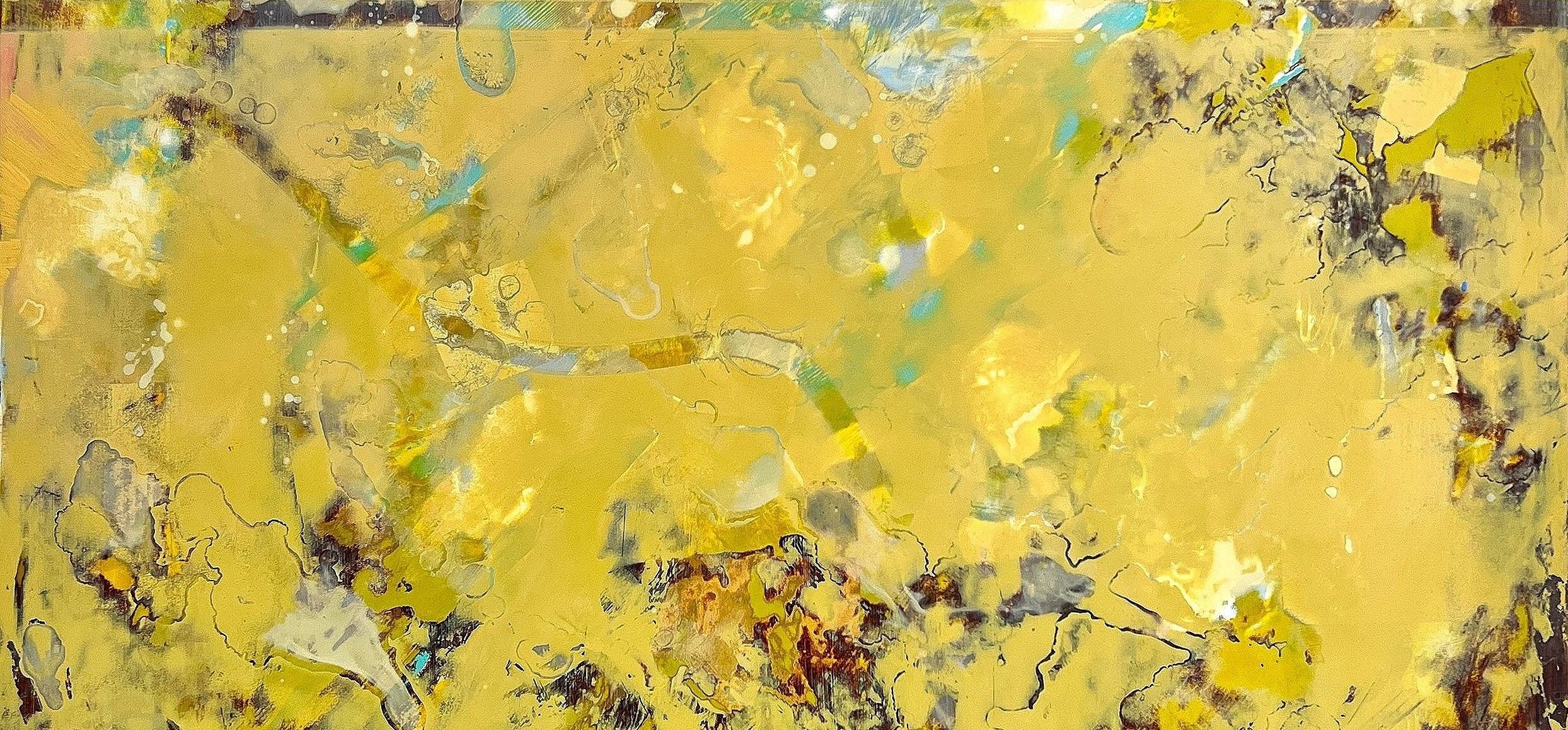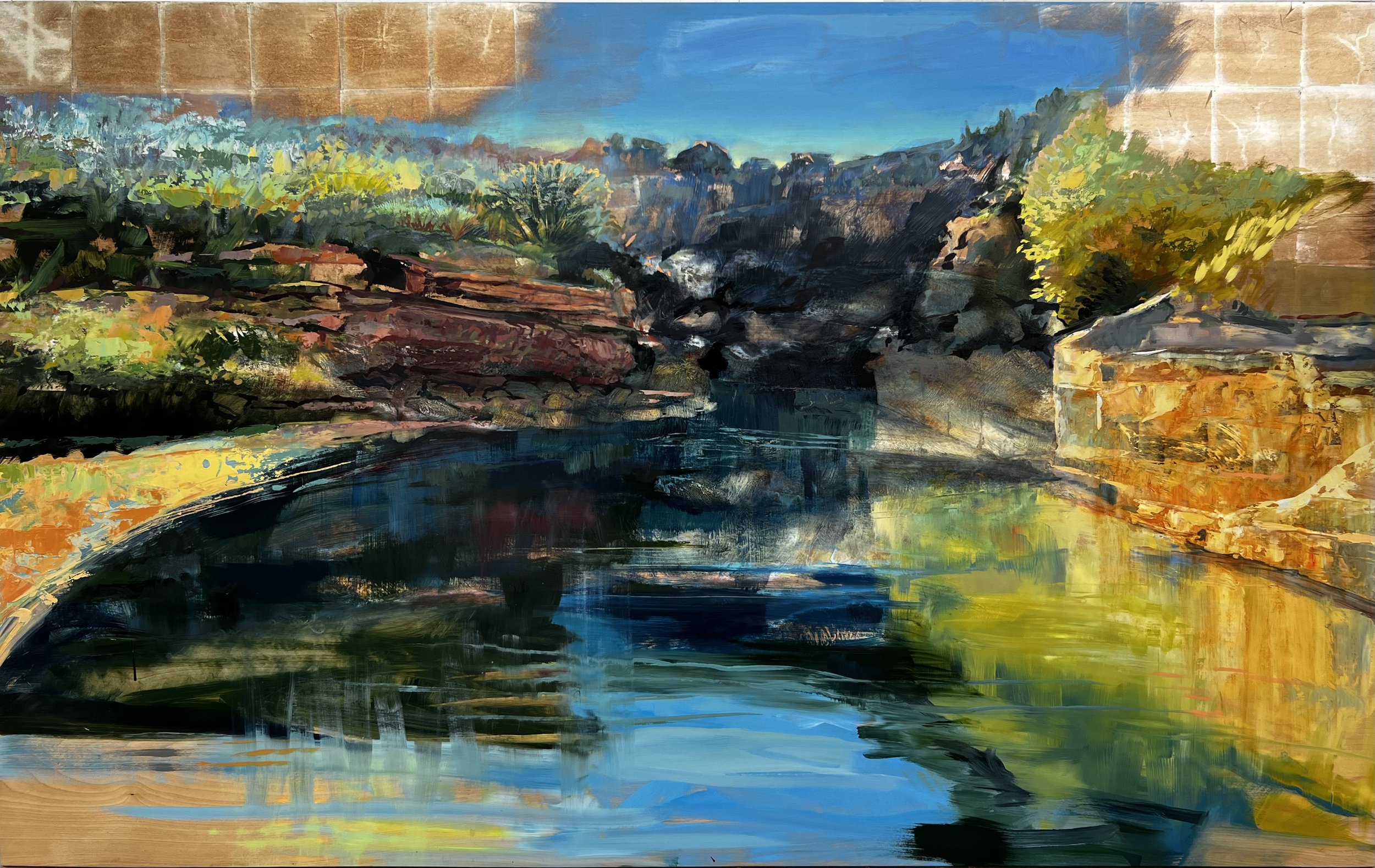
Boundary Crossings
I live in Gloucester, Massachusetts on a peninsula called Cape Ann which juts out into the Atlantic Ocean north of Boston. The Cape was settled by European immigrants in the early 1620s, but before that time it was a place visited periodically by various tribes of the Algonquin federation — who believed an ancient legend about a spirit-being living on this coastal land who might take them captive if they tarried here. I’ve come to believe that this tale was probably woven by wise chieftains who recognized the dangers of a place of such raw beauty — beauty that might waylay the people who would then be stranded here — a place beset by “perfect” storms. (Gloucester is the setting for Sebastian Junger’s book and the movie by that title.)
Autumn Sonata, ©Bruce Herman, 2020, oil on canvas; 36″ x 36″
And Cape Ann is in fact often hit by violent Nor’easters that can wreak havoc on coastal dwellings. This land was scoured and scraped by the great Laurentide Ice Sheet 10,000 to 20,000 years ago — whose retreat left huge granite boulders and erratics strewn throughout the woodlands, along with exposed ledges and outcrops. A geologist friend says that our property here along Walker Creek, which borders on the Great Ledge, was the stony heart of a mountain range as high as the Rockies — torn down entirely by those glaciers advancing and retreating over millions of years. The highpoint on our land is only about 90 feet above sea-level now, and the coastline (north of where Boston is now) was originally 60 to 100 miles out into the North Atlantic along Stellwagen Bank. Fishing-boats have dredged up prehistoric mastodon tusks there.
Autumn Sonata II, ©Bruce Herman, 2020, oil on canvas; 36" × 36"
Boundary Crossings, ©Bruce Herman, 2020, oil on panel; 30" × 30"
I mention all this about Cape Ann because this suite of paintings, Boundary Crossings, is about a wandering, peregrine spirit that I feel deeply as a painter — incarnated by those earlier peoples who visited here. I have a sense that my time here in Gloucester (since 1972, now a half-century) is more part of a journey than a settled home. I am headed for another, “better country, and a city whose architect and builder is God.” That journey, that pilgrimage, is also an odyssey of sorts, and the tidal estuaries here on Cape Ann have come to stand for a kind of liminal space along the way — a boundary land that is corollary to that inner spiritual landscape I am always traversing. I am bold enough to believe that this quite personal borderland contains something universal — a kind of internal/external paradox that we all live and share. We are walking contradictions, angel-beasts. Fresh water and saltwater merge here. Land and sea break into each other, and the unique ecosystem that is an estuary is just that—land and sea and sky at the same time. A meeting of heaven and earth.
Cielo, ©Bruce Herman, 2020, oil with 18k gold leaf on panel; 36" × 30"
Terra, ©Bruce Herman, 2020, oil with silver leaf on panel; 34" × 30"
I feel deeply Eliot’s words about time and his image of our vascular system mirroring that cosmic fractal design that manifests everywhere and in everything — a tree, a river seen from above, the branching of time and tide and human story
Choate Island, ©Bruce Herman, 2022, oil on wood panel; 38" × 59"
Laity Lodge Meditation: Frio River, ©Bruce Herman, 2022, oil on wood panel; 75" × 55"
Frio River Canyon, ©Bruce Herman, 2020, oil on wood panel; 59" × 38"
Frio River Canyon: Blue Hole, Early Morning, ©Bruce Herman, 2022 oil on wood panel with silver leaf; 48" × 72" (collection of Nancye and Steven Drukker)
Lastly, I will simply say that for me geological time, tidal time, and chronological time are distinct experiences — yet all three are governed for us by narrative time. Human narrative and divine narrative. The latter is largely unknown to us except in revelation — when the Creator chooses to disclose some fragment of the larger picture. Meanwhile we are left to sort through those fragments and see how they can be collaged into a unity. The liminal space of Cape Ann has become for me a symbol of that grand and costly simplicity, the lineaments of which we only receive glimpses. My prayer is that these paintings offer a celebration of those beautiful and mysterious fragments.
— Bruce Herman
•••
RELATED CONTENT


